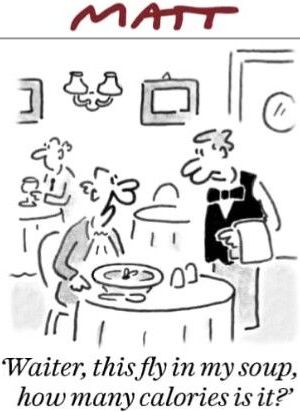Calorie Counts On Menus On Price Lists
An English proposal this week seeks to replicate what’s been happening in New York (and elsewhere) for a decade or so. There, any retail takeaway or dining place (with at least three outlets) became mandated to publish calories alongside every menu item.
My experience there renders me scathing of all the bleating small cafe and gastropub owners I hear complain in England currently. Moaning unfairness as only national behemoths – like Wetherspoons who already provide said info – have the resource won’t cut it.
For it works like a dream.
Even if you are not a calorie-counter, you probably know which dish or drink consumes more of your recommended daily intake than another. I myself saw a pair Wall St steaks for $50 and $80. The cheapest was “healthiest”. Go figure.
Yet this catching-up exercise did make me ponder a possible Sales equivalent.
We all know what our price list looks like.
Whether it more closely resembles an invoice, akin to a price list order form, or clever catalogue marketing treatment helping to mask range differences, it’s probably fairly standard. Item meets pricetag.
What if we could add calories alongside?
In our terms, a calorie could be many a thing. It is a unit of energy, for starters. And we have many such like.
An RoI range. Time saved. Money raised. Payback period. Lifespan expectations.
You could even get creative and try one of my favourites – make up a whole new unit of measure. Take my treasured horsepower example as inspiration.
There’s entertaining approaches to ‘extras’ this unleashes too.
After all, dietitians warn that it is not the salad that harms, but the dressing. The menu designers get around this by putting them in a pot on the side so you can add as little or as much as you like.
Then there’s the trick of resizing. Many, especially fast food or coffee chains, famously making their own alternatives for S, M, L and XL.
I learn we’ve developed an obesegenic environment. So perhaps it’s time we moved buyers away from a costagenic one.
Anything that helps shift them from the old adage of knowing the cost of everything, but value of nothing.
This could also be a thought experiment internally. Could your production, maintenance, delivery or product managers create draft ideas for you?
As long as you remember that you mustn’t fall for the prospect discount trick, asking for money off to improve customer return, you could well surf onto winning solution turf.

